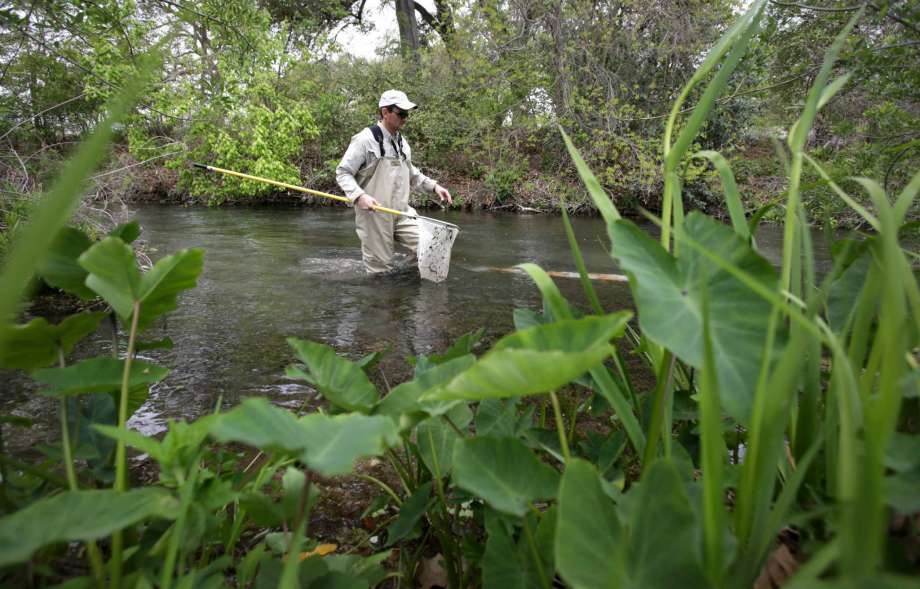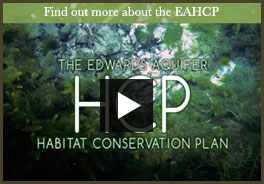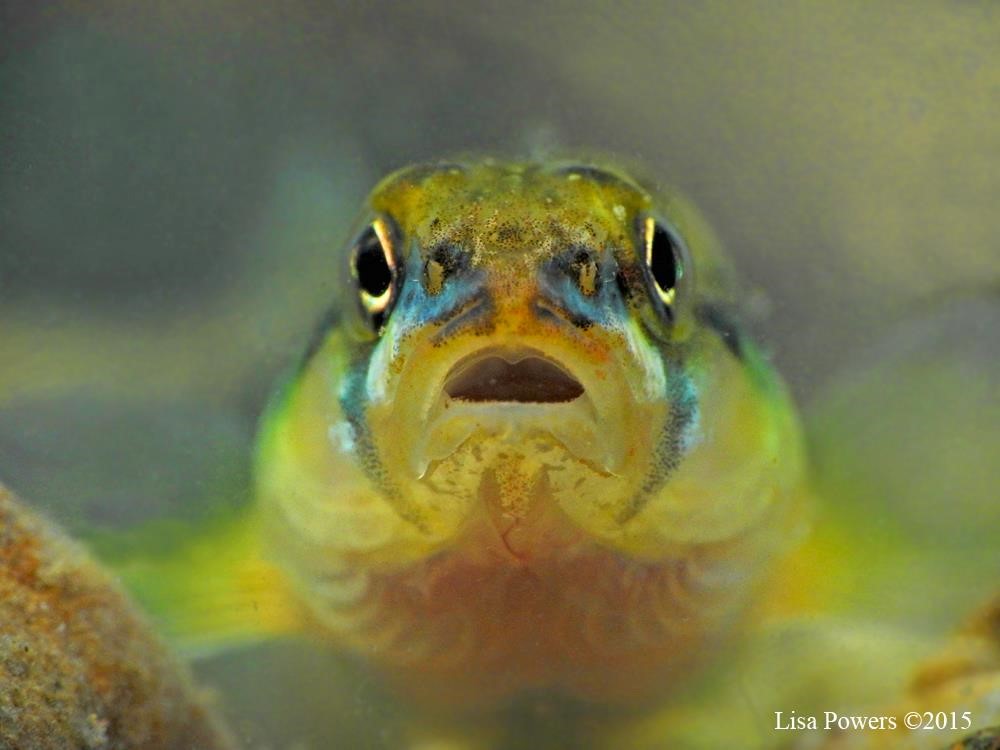Net Disturbance & Incidental Take
Overview
The Incidental Take Permit (ITP) issued to the Edwards Aquifer Recovery Implementation Program by the U.S. Fish & Wildlife Service authorizes “take” of certain species (“Covered Species”) resulting from aquifer groundwater pumping and recreational and other activities in the Comal and San Marcos springs and river systems.
The accurate and timely measurement of “take” is fundamental to compliance with the ITP. This take is authorized with the provision that a habitat conservation plan to protect the Covered Species is implemented—hence, the Edwards Aquifer Habitat Conservation Plan (EAHCP).
This page provides definitions for terminology associated with take, followed by an overview of how take is calculated for one of the EAHCP’s Covered Species. Each of the Incidental Take/Net Disturbance Assessments conducted to date in support of the EAHCP can be accessed below.
Annual Assessments
- Net Disturbance & Incidental Take Assessment for 2024 EARIP ITP Annual Report
- Net Disturbance & Incidental Take Assessment for 2023 EARIP ITP Annual Report
- Net Disturbance & Incidental Take Assessment for 2022 EARIP ITP Annual Report
- Net Disturbance & Incidental Take Assessment for 2021 EARIP ITP Annual Report
- Net Disturbance & Incidental Take Assessment for 2020 EARIP ITP Annual Report
- Net Disturbance & Incidental Take Assessment for 2019 EARIP ITP Annual Report
- Net Disturbance & Incidental Take Assessment for 2018 EARIP ITP Annual Report
- Net Disturbance & Incidental Take Assessment for 2017 EARIP ITP Annual Report
- Net Disturbance & Incidental Take Assessment for 2016 EARIP ITP Annual Report
- Net Disturbance & Incidental Take Assessment for 2015 EARIP ITP Annual Report
- Net Disturbance & Incidental Take Assessment for 2014 EARIP ITP Annual Report
- Net Disturbance Assessment for 2013 EARIP ITP Annual Report
- Incidental Take Assessment for 2013 EARIP ITP Annual Report
A darter gives its best “disturbed” face. The take provision is implemented to provide protection for threatened and endangered species. Even momentarily disturbing, without physically harming, a Covered Species can be considered an example of “take.” Photo credit Lisa Powers, 2015.
“Take” Terminology
Take
Section 3(19) of the ESA defines “take” as “to harass, harm, pursue, hunt, shoot, wound, kill, trap, capture, or collect, or to attempt to engage in any such conduct.”
- • “Harass” is further defined to include acts or omissions that create the likelihood of injury to a listed species by annoying them to the point as to significantly disrupt normal behavioral patterns (e.g., breeding, feeding and sheltering) (50 CFR 17.3).
• “Harm” is further defined to include significant habitat modification or degradation that results in death or injury to listed species by significantly impairing essential behavioral patterns (e.g., breeding, feeding, and sheltering) (50 CFR 17.3).
Broadly speaking then, under these definitions, if one does anything (intentionally or negligently) that disrupts the routine activities of a Covered Species, one has committed a take of that species.
Incidental Take
Take that is otherwise prohibited under Section 9 of the ESA if such take is incidental to, but is not the purpose of, the carrying out of an otherwise lawful activity (ESA § 10(a)(1)(B)).
Incidental Take Permit (“ITP”)
This is a specific permit issued by the FWS under Section 10(a) of the ESA to private parties that are conducting otherwise lawful activities, but not for the purpose of take, that might result in the taking of listed endangered or threatened species. An ITP will have specific requirements, including (but not limited to) the preparation and implementation of a habitat conservation plan (“HCP”) which is designed to minimize and mitigate the impact of the incidental take.
EAHCP Covered Species
Eleven (11) species are covered by the EAHCP. Eight (8) are listed by the FWS as endangered or threatened, and three (3) are petitioned for listing and have been included in the event that they are listed. The following species that are authorized for incidental take in the ITP are:
• Fountain darter (endangered)
• Comal Springs riffle beetle (endangered)
• Comal Springs dryopid beetle (endangered)
• Peck’s cave amphipod (endangered)
• Texas blind salamander (endangered)
• San Marcos salamander (threatened)
• San Marcos gambusia (endangered)
Although the Texas cave diving beetle, Texas troglobitic water slater, and Comal Springs salamander are covered by the ITP as petitioned species, incidental take assessments are not performed at this time because none of these species are yet federally listed. Incidental take assessments for the San Marcos gambusia (presumed to be extinct) will be performed only if they are rediscovered to exist in the Comal or San Marcos springs and river ecosystems. Because the Section 9 take prohibitions do not apply to listed plant species, Texas wild-rice being a plant, is not subject to this prohibition. However, FWS cannot issue an ITP unless it makes a “no jeopardy or adverse modification” determination under Section 7(a)(2). Therefore, although it is not necessary for Texas wild-rice to receive incidental take coverage under the ITP, it is nonetheless included to avoid any jeopardy/adverse modification issues. For these reasons, Paragraph H of the ITP does not set out a numerical value for authorized incidental take of Texas wild-rice, and for this reason incidental take assessments are not performed for this species.
Total Occupied Habitat
This is the total area within the Comal and San Marcos springs and river ecosystems that has been historically documented as occupied by the listed EAHCP Covered Species. Total Occupied Habitat will vary by species, and between species their Total Occupied Habitats may also overlap.
Occupied Habitat Disturbed
This is the portion of occupied habitat that overlies the Total Occupied Habitat disturbed by EAHCP activities for a given EAHCP Covered Species per ecosystem. Occupied Habitat Disturbed will vary by species, and between species their Occupied Habitats Disturbed may also overlap.
Calculating Take Under the ITP
First, determine the Total Occupied Habitat (submerged aquatic vegetation, spring orifice, etc.) for each species. Next, the Occupied Habitat Disturbed by EAHCP activities in a calendar year has to be determined and overlain on the Total Occupied Habitat to determine the “footprint” of the EAHCP activities giving rise to incidental take. The two categories of EAHCP activities that may give rise to incidental take specific to the EAHCP are:
- Direct HCP mitigation and restoration – The incidental take associated with implementation of EAHCP mitigation and restoration activities. Per the ITP, such activities are limited to no more than 10% of the Total Occupied Habitat on an annual basis when implementing restoration that may directly or indirectly affect the EAHCP Covered Species.
- All other HCP activities – The incidental take associated with implementation of all the other EAHCP activities (incorporating drought impacts), to the degree practical.
Once the Total Occupied Habitat and the Occupied Habitat Disturbed for each species have been determined for the two categories of activities, the percentage of Total Occupied Habitat Disturbed relative to Occupied Habitat Disturbed can be calculated. This calculation simply represents the amount of Total Occupied Habitat that was disturbed during a calendar year due to EAHCP activities, which is a necessary variable of the annual incidental take equation, but is not itself in isolation sufficient to calculate incidental take. Following this, long-term collection data on the EAHCP Covered Species and their occupied habitat is used to develop density (individuals/m2) descriptive statistics (percentiles, median, & mean) to use in the formal calculation of incidental take. For example, if the 25th-percentile density of species density is determined as the appropriate metric per established criteria in the methodology, this number is then multiplied by the species specific Occupied Habitat Disturbed to determine the incidental take for both categories of EAHCP activities. The incidental take for each category of activity are combined as an overall total incidental take calculation and then reported in a “net disturbance and incidental take assessment report” for each calendar year and incorporated into the annual report of the EAHCP submitted to the FWS each year by the ITP permittees.

An ecologist wades through the Comal River to monitor fountain darter populations. The take provision is implemented to provide protection for threatened and endangered species. Even momentarily disturbing, without physically harming, a Covered Species can be considered an example of “take.”
Conclusion
Performing the incidental take/net disturbance assessment—collecting data and making calculations to account for the impacts on the Comal and San Marcos spring and river systems that occur in the course of a year, over a broad spatial extent, and through different habitat types for a diverse array of taxa—is an inherently complex task. For additional detail on the intricacies involved in these assessments and associated calculations, those interested can refer to the full memoranda provided at the top of this page. As a requirement under the ITP, these assessments are reviewed annually by the U.S. Fish & Wildlife Service via the EAHCP’s annual report to ensure permit compliance.

